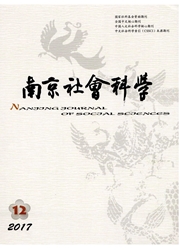

 中文摘要:
中文摘要:
旅游驱动型城市的旅游城镇化效率是衡量旅游业对城镇化推动作用的重要标准。本文基于投入产出理论构建了旅游城镇化效率的DEA模型,分别测算了我国12个典型旅游驱动型城市2000-2013年间的旅游城镇化效率与全要素生产率。研究结果显示,12个城市旅游城镇化效率均值由2000年的0.437上升到2013年的0.452,效率均值为0.413,效率上升幅度较小,水平较低。12个城市旅游城镇化全要素生产率年均下降13.5%,其中技术效率年均增长1.8%,技术进步效率年均下降12.7%,技术效率增长缓慢与技术进步效率负增长是全要素生产率下降的主要原因。我国目前旅游驱动型城市旅游城镇化效率普遍偏低,大部分城市旅游业发展处于要素投入阶段,未来发展中应该逐步提升旅游业的溢出效应来提高旅游驱动型城市的旅游城镇化效率。
 英文摘要:
英文摘要:
The urbanization efficiency of Tourism-driven city is an important criterion for measuring the role of tourism promotion on urbanization. This paper based on input-output theory to construct the DEA model of tourism urbanization efficiency, using the data of 12 typical tourism-driven cities in China from 2000 -2013 to measure their urbanization efficiency and total factor productivi- ty. The results showed the 12 typical tourism-driven cities' tourism urbanization average efficiency increased from 0.437 (2000) to 0.452(2013), the average efficiency is 0.413, the efficiency in- creased by a small margin, its level is lower. The total factor productivity of tourism urbanization in the 12 cities fell by 13.5%, among them , the technical efficiency average annual growth rate was 1.8%. The efficiency of technical progress has declined by an average of 12.7%. The main reason of the decline of total factor productivity is the slow growth of technical efficiency and the negative growth of technological efficiency. The urbanization efficiency of tourism-driven city is generally low at present in our country, most of the urban tourism development is in the stage of factor input, and it should gradually enhance the spillover effect of tourism to improve the efficiency of tourism urbani- zation in the future development.
 同期刊论文项目
同期刊论文项目
 同项目期刊论文
同项目期刊论文
 期刊信息
期刊信息
